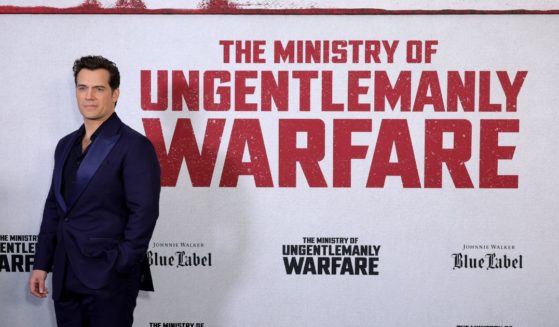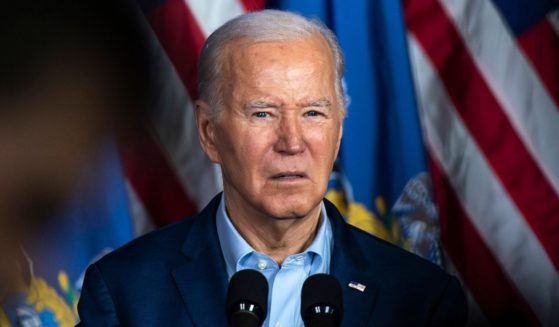Fauci Finally Says What Conservatives Have Said for Weeks - US Death Toll Will Be Lower Than Thought
In an appearance on MSNBC Wednesday, Obamacare architect and public health expert Ezekiel Emanuel sounded a clarion call: It could be a year and a half until life gets back to normal.
“Realistically, COVID-19 will be here for the next 18 months or more. We will not be able to return to normalcy until we find a vaccine or effective medications,” he said. “I know that’s dreadful news to hear. How are people supposed to find work if this goes on in some form for a year and a half? Is all that economic pain worth trying to stop COVID-19? The truth is we have no choice.”
Sounds painful, but Emmanuel made it clear he thought it was for the best we hear these things now: “One thing I’ve learned as a cancer doctor is that it’s wrong to paint an overly rosy picture in order to maintain a patient’s hope. It’s wrong because it fails.”
This is a fair point. You don’t tell someone with stage 4 esophageal cancer that a round of chemo should clear things right up. On the other hand, what happens if you paint an overly dour picture? Perhaps not by much, per se, but by enough that it throws off our responses?
I ask this because earlier in the day, Dr. Anthony Fauci, director of the National Institute of Allergy and Infectious Diseases, said what many conservatives have been saying for weeks — namely, that death toll predictions, including the White House’s own models, could be overestimating the number of deaths and the amount of medical resources needed to deal with the novel coronavirus.
“Although one of the original models projected 100- to 200,000 deaths, as we’re getting more data and seeing the positive effect of mitigation, those numbers are going to be downgraded,” Fauci said in an appearance on Fox News.
“I don’t know exactly what the numbers are going to be, but right now it looks like it’s going to be less than the original projection.”
Fauci added that this was “going to be a bad week for deaths” but that it was the “beginning of a turnaround.”
This comes as one of the most-cited models of coronavirus deaths and resource use from the University of Washington’s Institute for Health Metrics and Evaluation revised its projection of U.S. deaths downward by over 35 percent and moved the estimated peak of the virus up to April 11.
The IHME model, which factored in every state issuing stay-at-home orders, had originally projected 93,531 deaths through August and a hospital bed shortage of 87,674 at the peak of the crisis. That was revised downward on Sunday to 81,766 deaths. On Wednesday, the projected death total was revised downward further still to about 60,500 dead by Aug. 4, with an estimated 94,250 hospital beds needed, about 16,000 more than would be available.
What makes coronavirus so difficult to judge is that few models can accurately predict how the disease will affect the use of resources. That said, the IHME had already come under question for a hospital bed count that was wildly off, particularly in the case of New York state.
The model had predicted that 50,962 beds would be needed in New York on April 1. The actual number was 12,226, making the original projection 400 percent too high.
The IHME was considered one of the more conservative models, as well, originally projecting a range of 38,000 to 162,000 coronavirus deaths in the United States before Aug. 1 — significantly lower than the White House’s projection of 100,000 to 240,000 deaths.
Fauci’s appearance on Fox News was a sign that the White House was rejecting its projected totals, as well. How those numbers were arrived at was the subject of much discussion when they were released last week, as The Washington Post reported, but it was generally assumed the IHME model had played a significant role in the White House’s modeling.
On Tuesday, meanwhile, Centers for Disease Control and Prevention Director Robert Redfield also predicted a lower death total from the coronavirus than models had accounted for.
“What we’re seeing is a large majority of the American public are taking the social distancing recommendations to heart,” he said in an interview with an Arizona radio station, according to The Hill.
“And I think that’s the direct consequence of why you’re seeing the numbers are going to be much, much, much, much lower than would have been predicted by the models.”
There are going to be few bright spots this week during what Surgeon General Jerome Adams said would be the “hardest and saddest” week of the crisis, “our Pearl Harbor moment and our 9/11 moment.”
Hard and sad though it may be, the fact remains that it likely won’t be as hard and sad as the “experts” were predicting — or, for that matter, as conservatives have been predicting before this. Yet, when conservative media predicted that the models were on the high side, we were rebuked for not being fearful enough.
Granted, there’ve also been too many fringe voices who have said there’s absolutely no threat from coronavirus. That’s clearly not the case.
Even past the peak, it’ll be difficult to reopen and go back to status quo ante.
However, that also doesn’t mean shutting down the economy for 18 months as Emanuel recommended Wednesday. A phased reopening with widespread testing, aggressive contact tracing and isolation for affected parties can contain the virus until a vaccine comes to market.
There will be some immunity. It may be slow, but it can happen.
Prophecies of doom can scare people into action. They can, if properly deployed, make people realize the gravity of a situation heretofore taken lightly.
But it’s not a long-term prescription for wellness.
Leveling with us is one thing. You don’t “paint an overly rosy picture in order to maintain a patient’s hope.” You also don’t paint an excessively gloomy picture to maintain a patient’s fear in order to obtain compliance.
With all due respect to Mr. Emanuel, his predictions sound a lot like that.
Truth and Accuracy
We are committed to truth and accuracy in all of our journalism. Read our editorial standards.












